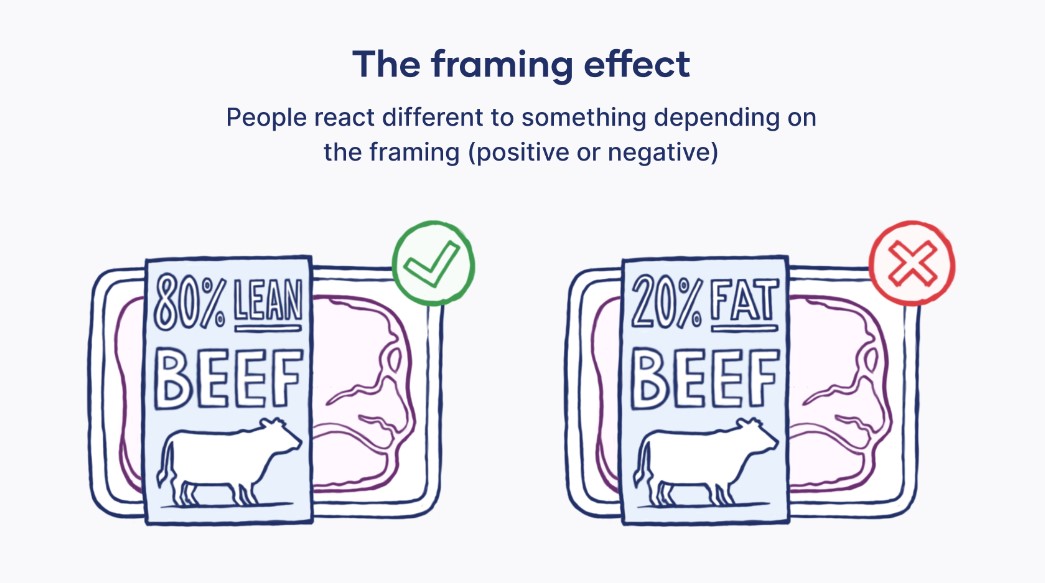The framing effect is a cognitive bias that occurs when individuals react differently to information or choices depending on how the information is presented, or “framed.” Essentially, people’s decisions and judgments can be influenced by the way the information is framed, even if the underlying information is the same.
Explanations:
The framing effect is based on the idea that individuals often make decisions emotionally and irrationally, rather than purely rationally. The way information is presented can trigger different emotional responses, leading to varying judgments and choices.
Examples:
Medical Choices: A medical treatment described as having a “90% success rate” may be more appealing to patients than the same treatment described as having a “10% failure rate.”
Marketing: A product advertised as “90% fat-free” may be perceived more positively than one labeled “10% fat.”
Political Messaging: Political candidates may present the same policies in different ways to elicit support based on how the policies are framed.
Solutions:
Awareness: Be aware of the potential for the framing effect and critically evaluate information based on its content, not just its presentation.
Question Assumptions: Challenge the framing of information by examining the underlying data and considering alternative ways to present the information.
Objective Evaluation: Strive to make decisions and judgments based on rational analysis rather than being swayed by emotional or biased framing.
Seek Diverse Perspectives: Consult with others to gain different perspectives on framed information to minimize the impact of framing bias.
Addressing the framing effect involves being mindful of the way information is presented and consciously striving to evaluate choices and judgments based on the underlying facts rather than emotional responses triggered by framing.
